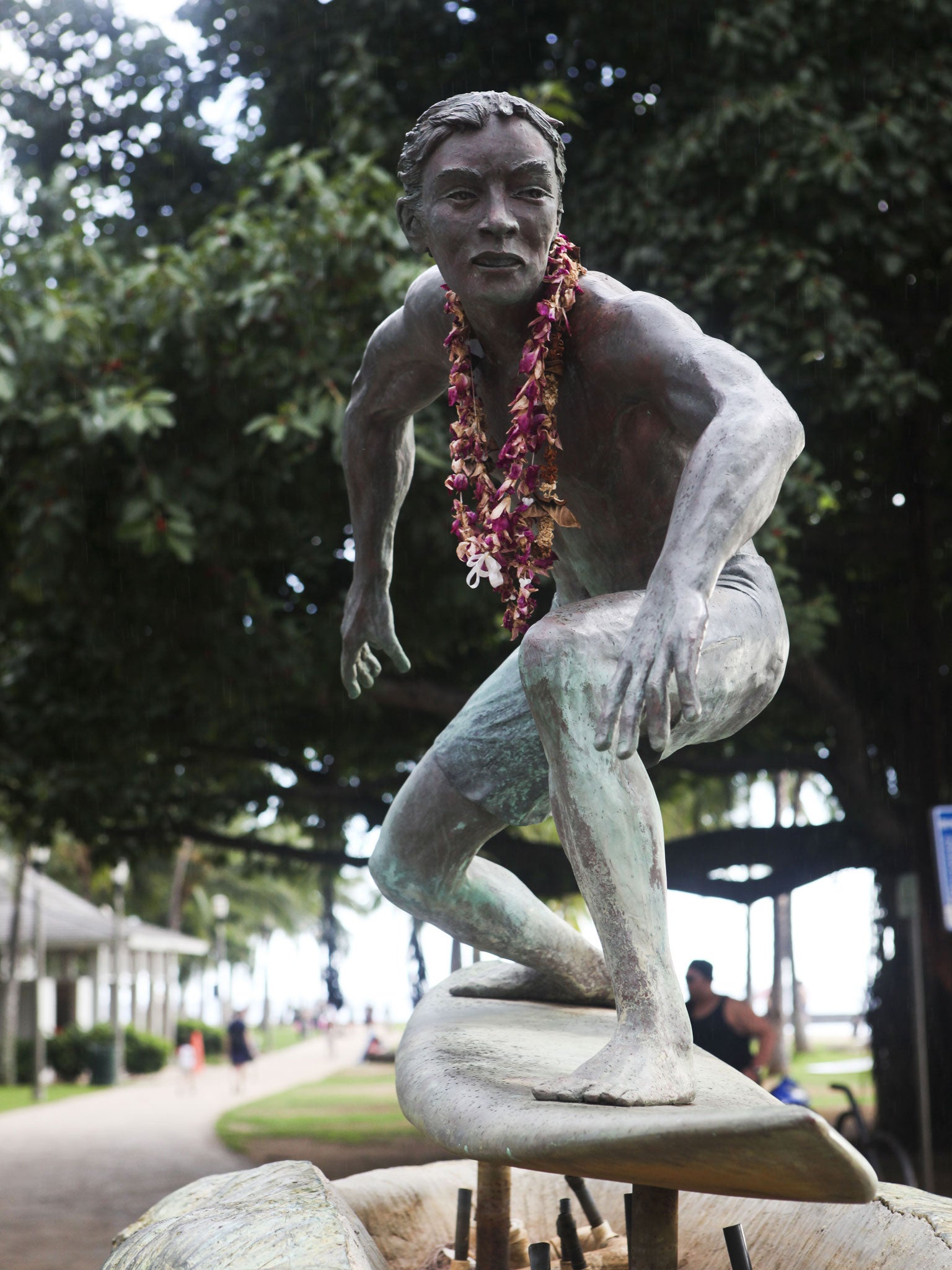Sporting Heroes: Eddie Aikau, the bravest surfer of all

Your support helps us to tell the story
From reproductive rights to climate change to Big Tech, The Independent is on the ground when the story is developing. Whether it's investigating the financials of Elon Musk's pro-Trump PAC or producing our latest documentary, 'The A Word', which shines a light on the American women fighting for reproductive rights, we know how important it is to parse out the facts from the messaging.
At such a critical moment in US history, we need reporters on the ground. Your donation allows us to keep sending journalists to speak to both sides of the story.
The Independent is trusted by Americans across the entire political spectrum. And unlike many other quality news outlets, we choose not to lock Americans out of our reporting and analysis with paywalls. We believe quality journalism should be available to everyone, paid for by those who can afford it.
Your support makes all the difference.On the Hawaiian island of Oahu, it’s not the widely known sporting icons who are the most revered, but surfer Eddie Aikau.
Surfing, invented by the ancient Hawaiians, was an integral part of Polynesian culture. Aikau took immense pride in his Polynesian heritage, and once he discovered his passion and talent for surfing, he dedicated his life to preserving the image of his culture, using only his board. He became a regular top contender in professional competitions and won the 1977 “Duke”, the most prestigious contest in Hawaii at the time.
Aikau was a big-wave surfing pioneer, braving waves far larger than most would dare. He was also the first lifeguard of Waimea Bay, a notoriously dangerous part of Oahu’s North Shore. Throughout his nine-year tenure, not a single life was lost. While 12th in the word surfing rankings, in 1971 Aikau was named lifeguard of the year.
In 1977, the Polynesian Voyaging Society sought volunteers for a crew of Hawaiians to sail 2,500 miles following the ancient route of Polynesian migration between Hawaii and Tahiti. The voyage would be completed on the Hokule’a, a double-hulled canoe of the kind the Polynesians had used over 600 years before. Unsurprisingly, Aikau raised his hand.
After months of training, he set sail with the rest of the crew on 16 March 1978, guided only by the stars. That first night, the Hokule’a sailed into a maelstrom. The crew fought it through the night, but the boat capsized. Fifteen miles from the nearest shore, rescue seemed impossible. The next morning, Aikau removed his lifejacket, so he could better swim, and, using a surfboard rescued from the Hokule’a, set off for land to find help.
Hours later, the crew’s last flare was spotted by an airline passenger. The coastguard was notified; the crew was rescued.
Aikau, who was 31, was never seen again.
Join our commenting forum
Join thought-provoking conversations, follow other Independent readers and see their replies
Comments